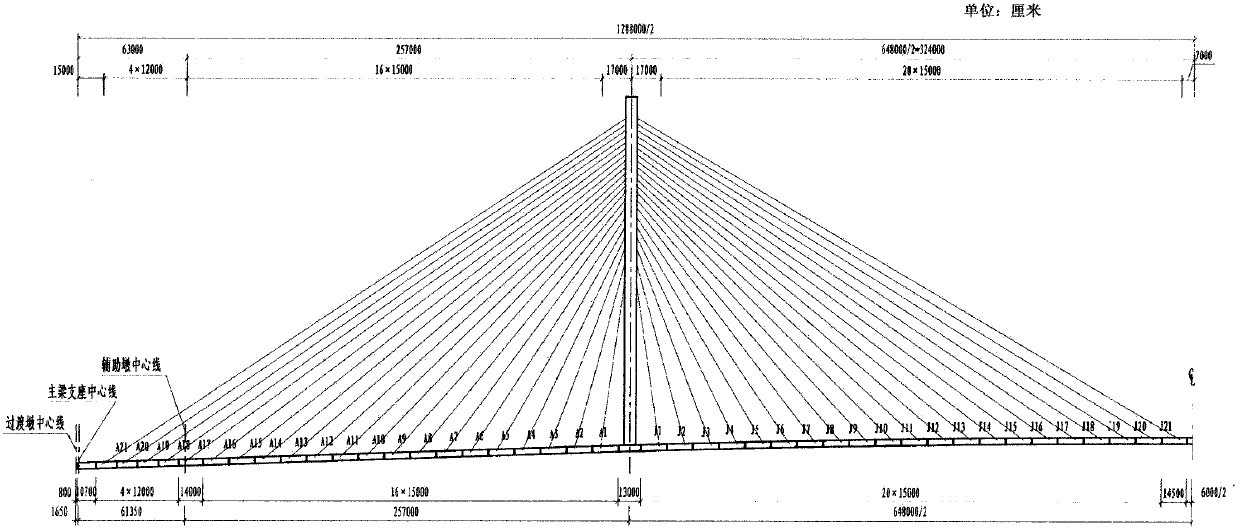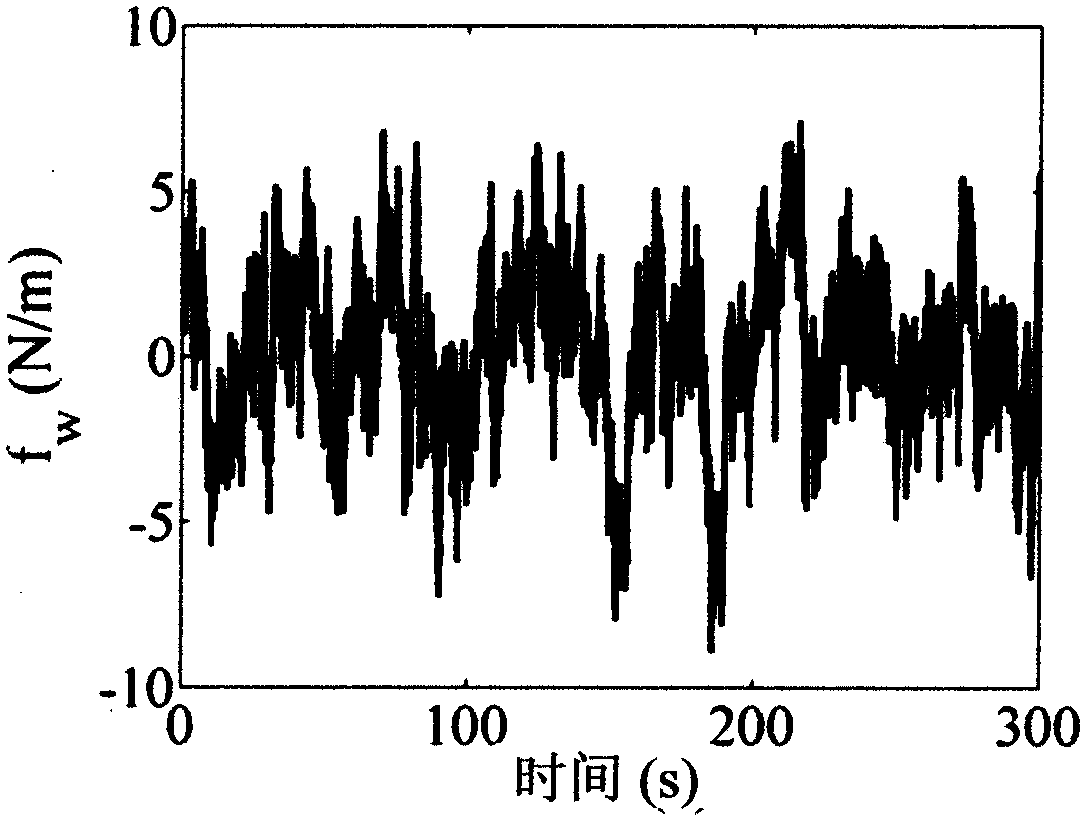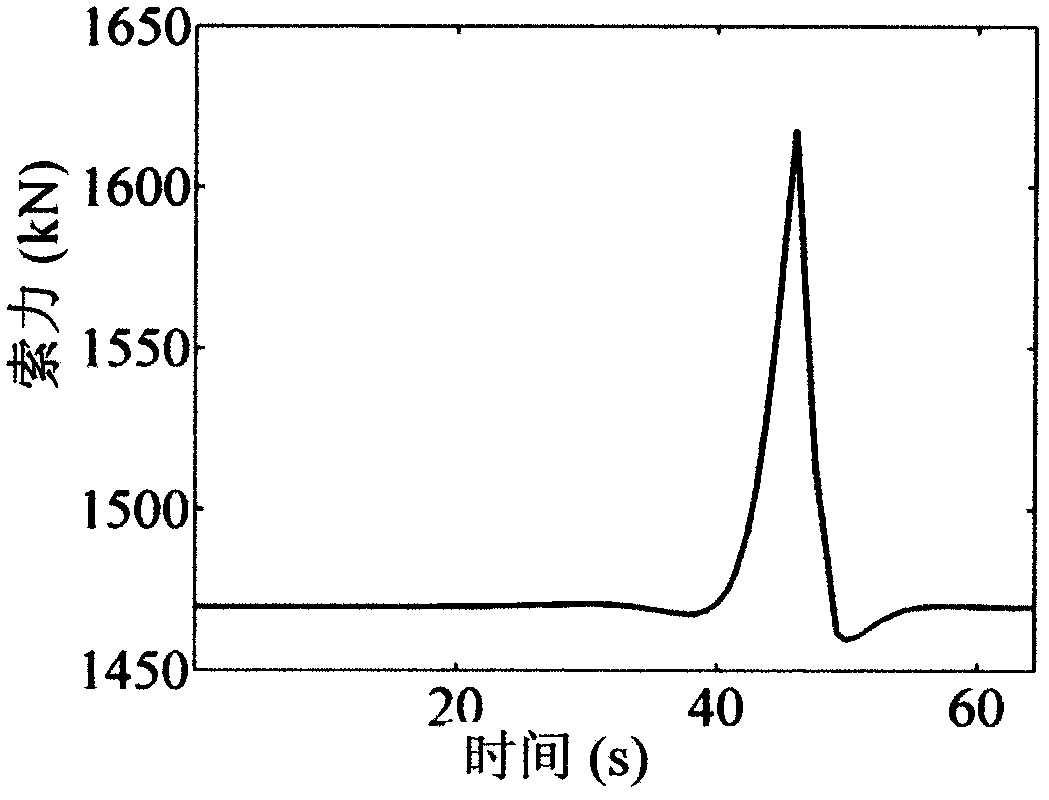Inhaul cable time varying cable force course recognizing method based on extended kalman filter
A technology that extends Kalman and process identification, applied in the field of time-varying cable force history identification of cables, which can solve the problems of complex installation, limitations, and inability to identify the time-varying cable force and time history of cables.
- Summary
- Abstract
- Description
- Claims
- Application Information
AI Technical Summary
Problems solved by technology
Method used
Image
Examples
Embodiment 1
[0118] The state space equation is constructed by monitoring the acceleration signal and the vibration equation of the cable, and the time-varying cable force of the cable is identified by the discrete extended Kalman filter method. The specific process is as follows:
[0119] Neglecting the effects of sag and axial inertia of the cable, the vibration equation of the cable is expressed as:
[0120] d 2 q ~ n d τ 2 + 2 ξ n n d q ~ n dτ + n 2 [ 1 + u ~ ...
Embodiment 2
[0202] like figure 1 As shown, the J03 cable on a cable-stayed bridge in Nanjing is composed of 109 7mm steel wires, the cable length L=112.029m, and the cross-sectional area A=4.195×10 -3 m2, the density per unit length is μ=32.93kg / m.
[0203] Step 1: The algorithm of the present invention needs to use the cable monitoring acceleration sensor information to identify the cable force, and calculate the J03 cable in the figure 2 The wind speed and image 3 , Figure 4 The acceleration response at the L / 6 position under the indicated cable force. Figure 5 , Image 6 are the 30-second acceleration time histories of the L / 6 channel of the J03 cable under the action of a single vehicle and multiple vehicles, and the power spectrum analysis results are as follows Figure 7 , Figure 8 As shown, it can be seen from the figure that the first 11 modes are mainly involved in the vibration, and the effects of other modes are very small. It is feasible to take the vibration contro...
Embodiment 3
[0207] The length of the test cable is 14.02m, the diameter is 1.5cm, and the mass per unit length is 1.33kg / m. , one end of the test cable is fixed, and the other end uses a threaded rod to adjust the stretching length of the cable, thereby adjusting the size of the cable force. Two fans are used as external excitation to generate vibration, and the identification of the cable force is simulated under the condition that the external excitation information of the cable is unknown.
[0208] Step 1: Arrange acceleration sensors at 2.43m and 3.60m respectively to test the in-plane and out-of-plane vibration responses. The sampling frequency is 200Hz. The test device, sensor layout and geometric dimensions are as follows: Figure 13 shown. For example Figure 14 , Figure 15 The power spectrum analysis is performed on the 30s in-plane and out-of-plane acceleration time histories of the test cable acceleration sensor shown, and the results are as follows Figure 16 , Figure 1...
PUM
| Property | Measurement | Unit |
|---|---|---|
| Diameter | aaaaa | aaaaa |
Abstract
Description
Claims
Application Information
 Login to View More
Login to View More - R&D
- Intellectual Property
- Life Sciences
- Materials
- Tech Scout
- Unparalleled Data Quality
- Higher Quality Content
- 60% Fewer Hallucinations
Browse by: Latest US Patents, China's latest patents, Technical Efficacy Thesaurus, Application Domain, Technology Topic, Popular Technical Reports.
© 2025 PatSnap. All rights reserved.Legal|Privacy policy|Modern Slavery Act Transparency Statement|Sitemap|About US| Contact US: help@patsnap.com



